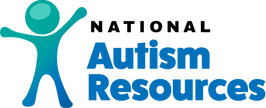Pivotal Response Treatment for autism, or PRT, is a therapy developed by Dr. Robert L. Koegel, Dr. Lynn Kern Koegel and Dr. Laura Shreibman, at the University of California, Santa Barbara. Pivotal Response Treatment at one time was called the Natural Language Paradigm (NLP).
It is a behavioral intervention model based on the principles of ABA that has been in development since the 1970s.
Pivotal Response Treatment (PRT) teaches language, decreases disruptive/self-stimulatory behaviors, and increases social, communication, and academic skills by focusing on pivotal behaviors that affect a wide range of behaviors. These pivotal behaviors are defined as areas that are central to wide areas of functioning such that improvements occur across a large number of behaviors.
Two key or pivotal areas are motivation and initiation of communications.
How is Pivotal Response Treatment different than Applied Behavioral Analysis?
Pivotal Response Treatment is different than ABA, in that PRT is child directed. Motivational strategies are used throughout intervention as often as possible. For example, if a child attempts to request a toy, the child is immediately given the toy. Thus they are rewarded for their attempt at initiating communication.
If you are interested in PRT its best to find a professional trained by the Koeg Certification program. PRT programs usually involve 25 or more hours per week. Those who support the child should use PRT methods consistently in every part of the child's life. For more information visit the UCSB KOEGEL AUTISM CENTER.
Free U.s. Shipping On Orders Over $89 (Excludes items with truck symbol, AK & HI)
Quick Search
Free U.S. Shipping On Orders $59+. (Excludes items with truck symbol, AK & HI)
- Teaching
- Toys & Gifts
-
Calming
Calming
Go Back - Sensory & OT
- Resources






